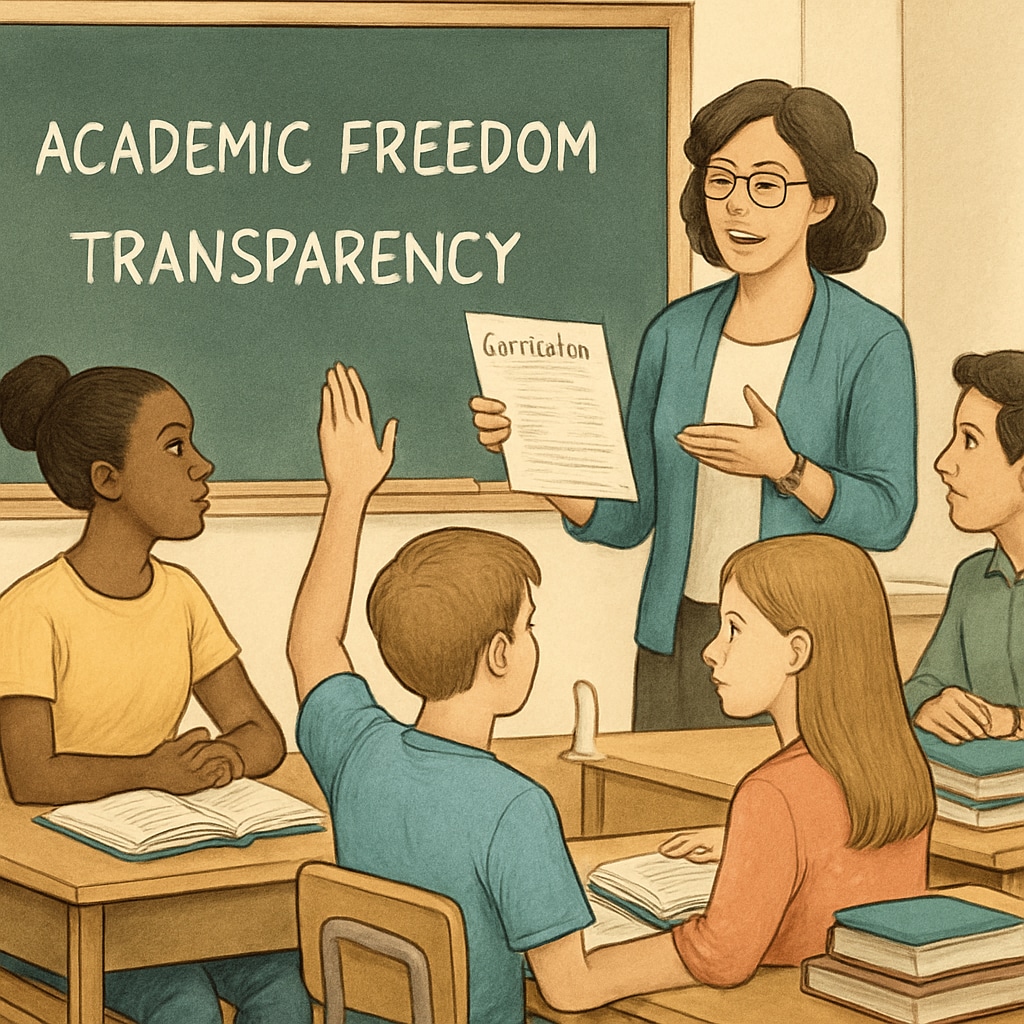Recent developments in academia, spearheaded by conservative groups such as the Heritage Foundation and Project 2025, have raised vital questions about education independence. These organizations have requested public access to university course content, claiming transparency as their goal. However, critics argue this initiative might undermine academic freedom, a principle that ensures educators can teach without undue interference. This debate has extended beyond universities, impacting K12 education as stakeholders wrestle with how to balance educational autonomy with external oversight.

Academic Freedom in the Spotlight
Academic freedom (the liberty of educators to teach and research without external constraints) is a cornerstone of robust education systems. While proponents of transparency, such as the Heritage Foundation, argue for open access to curricula to ensure ideological balance, critics fear such policies could lead to self-censorship among educators. Project 2025, for instance, has emphasized the need to address perceived ideological biases, suggesting that some academic content may be overly influenced by political or social agendas.
For example, the debate over academic independence has led to concerns about the potential “surveillance” of educators, which could stifle critical thinking and innovative teaching methods. Academic freedom on Wikipedia provides further insights into this foundational concept.
Implications for K12 Classrooms
The ripple effects of this controversy have reached K12 classrooms, where educators often operate under stricter guidelines than their higher education counterparts. Transparency in K12 curricula is already a significant focus, with parents and community members demanding more involvement in content selection. However, excessive oversight could hinder teachers’ ability to address sensitive or controversial topics effectively.
For instance, when external organizations push for public access to lesson plans or classroom discussions, educators might feel pressured to avoid certain subjects altogether. This could lead to a sanitized curriculum that sacrifices depth and diversity of thought for fear of backlash.

Striking the Right Balance
To achieve a balance between freedom and oversight, stakeholders must address key questions:
- What constitutes acceptable levels of transparency without infringing on academic independence?
- How can educators be protected from undue scrutiny while ensuring accountability to families and communities?
- What safeguards can be implemented to preserve critical thinking and diverse perspectives in curricula?
Some experts suggest creating independent review boards to evaluate curricula for ideological balance without compromising educators’ autonomy. Additionally, fostering open dialogue among educators, parents, and policymakers can help bridge gaps in understanding and expectations. As a result, education systems might better navigate these challenges while maintaining their integrity.
For further reading on balancing transparency and autonomy in education, Britannica’s article on academic freedom offers insightful perspectives.
The Road Ahead for Education Policymakers
As debates surrounding the Heritage Foundation and Project 2025 unfold, education policymakers face the challenge of ensuring fair oversight without overstepping boundaries. A nuanced approach that respects educators’ expertise while addressing public concerns is essential to uphold the integrity of both K12 and higher education systems.
Ultimately, the goal should be to empower educators to foster critical thinking and independent inquiry in students, preparing them for complex societal challenges. Only by striking this balance can education systems truly thrive in an era of ideological scrutiny.
Readability guidance: This article uses concise paragraphs, short sentences, and transitional phrases (e.g., however, for example, as a result) to enhance readability and flow. Lists break down complex ideas into manageable points for better comprehension.


